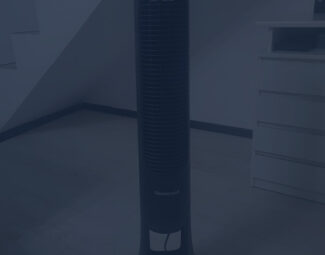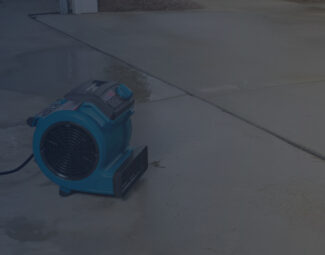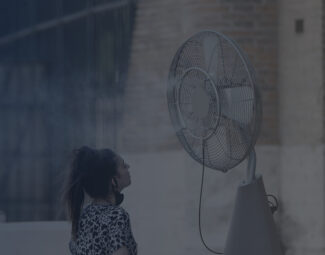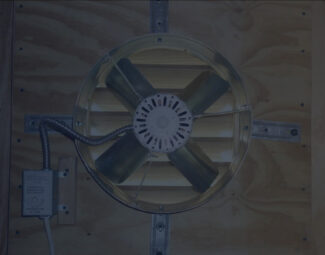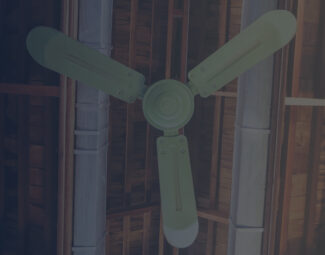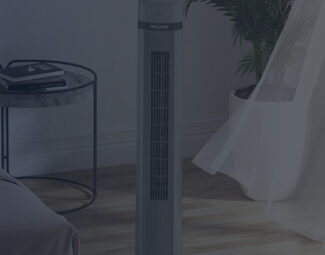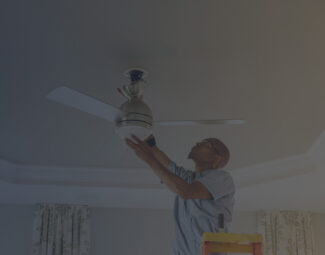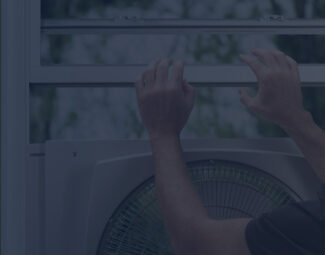A low-cost alternative to AC units, the fan demonstrates effectiveness when it comes to creating comfortable living conditions as the weather gets hot by blowing a cooling breeze in the room you use them in. But with such a multitude of fan types available, it can be quite tricky to decide on a particular type.
Next, we will analyze tower and pedestal models, two of the most sought-after options due to their blowing power, portability, and design. With the info you gather here, you are certain to make an informed decision that will comply with your demands.
Fans might provide thermal comfort, but they don’t lower temperatures indoors. For this, check out the best small portable air conditioners, cooling systems that you can easily relocate, have a small footprint, and generally cost less than other AC units upfront and over the long term.
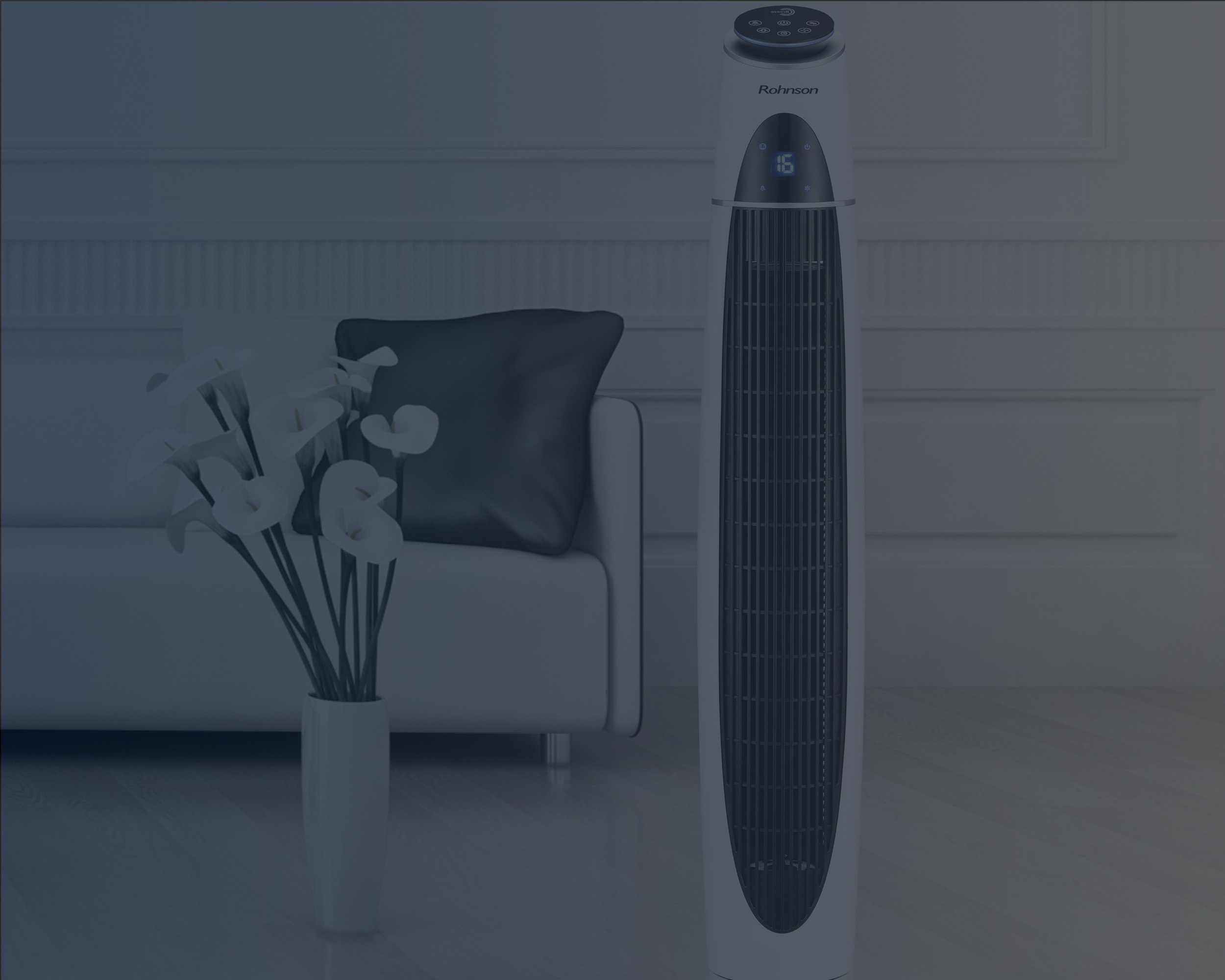
Tower Fan Placed on Floor next to a Vase with Flowers
Tower Fans
A narrow and tall unit that blows air to help make you feel cooler as it hits your skin. Aesthetically, tower-style models are among the most sought-after fan types as they bring a touch of modern feel into any room.
Check out our ranking of the best tower fans accessible at the moment. All of the selections here are top of the line, keeping you cool and granting the latest functions and features to make living conditions at home better regardless of how hot the weather gets.
Types
The slim profile of the tower fan makes it a viable choice even for the most cramped room, fitting perfectly in corners. The futuristic appearance most models flaunt is what makes them pop and more easily catch the attention of interested customers. The available types include:
- Oscillating: The horizontal motion of the air disseminated in the room makes oscillating models much more proficient at cooling as they don’t concentrate the airstream in a single direction/area.
- Ceramic: The material is much more resistant to heat, pressure, and wear as opposed to the plastic generally used in the manufacturing of these products. Moreover, it is relatively lightweight.
- Bladeless tower fans: The lack of blades makes them completely safe in households with children and pets. There are no safety risks involved in their operation.
Running Costs
Operating a tower fan 24/7 won’t cost you much, especially if you opt for a model like the Lasko 2554 Wind Curve that even features a timer function, enabling you to program it to automatically stop after your selected amount of time. This way, even if you are not nearby to shut it off, it will put an end to its operation to not draw more power than needed. As an estimation, irrespective of the model you choose and the value of power in your state, it should not cost more than $100-$130 per year to run the fan continuously.
Drawing only 31 watts when it runs, the Honeywell Kaz HY-023 is one of the most economical tower-style models available.
Useful Features and Functions
Selectable speeds:
There are generally multiple speed settings provided for customers to select between. The standard is for a unit to provide 3 speed levels, but there are models like the Vornado 184 that provide more (in this specific case, 4 speed settings at put at your disposal).
Oscillating function:
Most modern models come with this feature that grants a more even and quicker spreading of the airstream in the room. What is neat is that the encasement makes it unnoticeable when you look at the unit, but you feel the breeze going left to right as soon as you turn it on.
Programmable timer:
The option to program when the fan should turn off comes in handy for two motives. One, you can save on energy bill costs as you limit its functioning to what you strictly need, which would not be possible if you were to turn it on and go to work, for example. Due to this feature, you can set it to run for only a few hours while you are gone rather than turn it off when you come home, which could be much later. Second, you are provided more control over its operation, which makes your life easier when using it.
Ionizer function:
The purpose of this function is to release negative ions into the air. By attaching to airborne particles that compromise indoor air quality and causing them to drop because of the added weight, the ionizer feature helps make your home a healthier, safer space for you to be in.
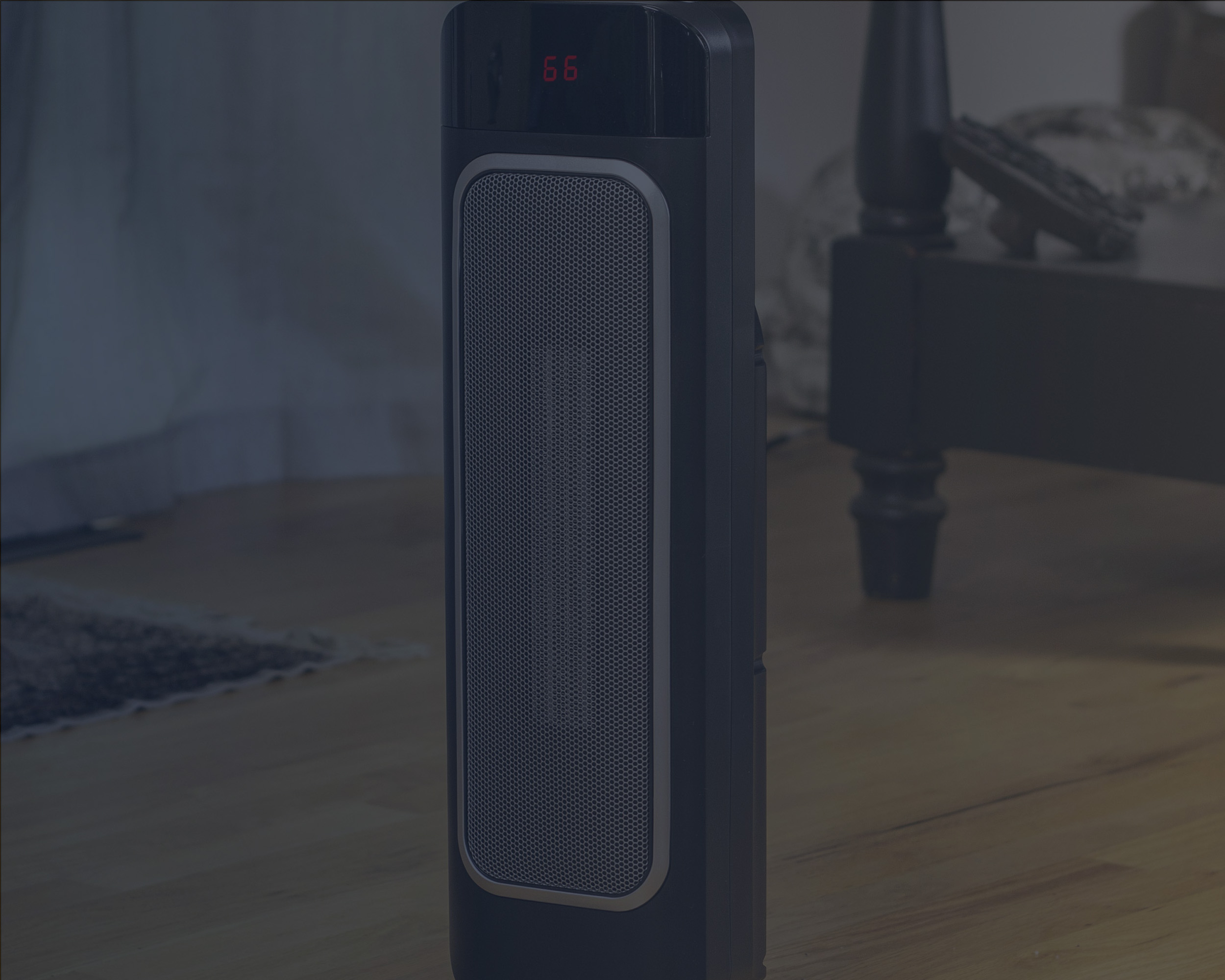
Tower Fan with Heating Function Placed on the Floor
Heating option:
While this is not a common feature indeed, you must keep an eye on it as it saves you money. This is due to the fact that you can use it as a heating source during the colder months of the year, so you won’t have to separately acquire and utilize a heater for the task.
Check out the Dyson AM05 Hot & Cool if you are interested in acquiring a fan that can work year-round. During summer, rely on it to make you feel cool, whereas, when the cold weather comes, it transforms into a veritable tower fan heater that can help keep you warm.
Humidification capabilities:
Another uncommon feature yet one that adds to a fan’s “wow” factor, humidification comes in handy if you live in an area where air moisture levels are low. Thus, instead of having to get a room humidifier to normalize RH levels, you can rely on the unit to make you feel cooler with its breeze, while also adding moistness into the air.
A complete product that you should seriously consider, the NewAir AF-310 stands out as it circulates the air indoors, can double as a swamp cooler, eliminates airborne particles to cleanse the air, and even raises the humidity to spare you of low air moisture repercussions.
Pros
- Feature-rich: As we discussed in the previous section, there are quite a few features and functions that add to the usability and performance of tower fans. Reliant on the model you pick, you could end up improving indoor air quality as aside from circulating the air, it will increase moisture and purify the air as well.
- Space-saving design: What all models have in common is a sleek, compact design. Their bases are small, so you can go ahead and put them in any corner of the room without inconveniencing the current setup. Moreover, while tall in their design, tower-style models are not as tall as pedestal models.
- Easy to clean: Blade-free fans are hands-down the simplest to clean as you just have to wipe them down with a cloth, not having to disassemble them. But it is just as easy as with classic tower-style models as all you need to do is utilize a brush to clean the grill when it gets dusty.
- Safe to use: Even with models that integrate blades and moving parts, these are safely encased so that injury danger does not exist even when knocked over.
- Wide price range selections: Whether you have a tight budget or enough money to splurge on a model with all the available features and functions, you must find a product to fit for your financial possibilities as there are sufficient selections price-wise to pick from.
Cons
Remember that regardless if you pick a pedestal or tower unit, you cannot rely on the product for air conditioning as this is not its function. If you pursue effective cooling without spending as much money as you would on an AC unit, we recommend that you look into the best evaporative air coolers instead as they offer thermal comfort at a portion of the cost.

Pedestal Fan Placed in a Living Room
Pedestal Fans
The large-size blades featured make pedestal types quite popular as their blowing power is higher as opposed to most fans. Basic in their design indeed, this is not necessarily a downfall as they serve their purpose quite effectively.
Want a more ingenious pedestal fan? Then check out our top of the best outdoor misting fans, most of which are pedestal-style units. What makes them so distinct is that in their operation, they spray cooling mist so that you cool off faster and feel fresher even on the hottest day of summer.
Types
What first comes to mind when you think about a fan is the pedestal type since it is the most commonly used all around the world. It is the pedestal style that lets them spread the air on a higher level and adds to their appeal. When it comes to the different available pedestal fans, you have:
- Bladeless: Just as with bladeless tower units, these are the safest to use as there is no danger involved with their operation due to the lack of blades.
- Oscillating: Moving from side to side, or up and down, they ensure an optimal spread of the airstream throughout the room rather than focusing on a single spot, these are the most sought-after pedestal fans.
- Fixed: Designed to concentrate the breeze in a specific direction, which makes them viable for spot cooling (when you want to focus the airflow on a certain location in the room).
- Rotating grill: Provide simultaneous spreading and circulating of the cool air in the room rather than going from side to side.
Running Costs
On average, pedestal fans consume from 50W to 100W. This is rather similar to the assessment of tower fans, between the varieties existing only insignificant dissimilarities (reliant on the models you collate too, clearly). Thus, anticipate spending the same amount on a pedestal model as you do on the tower-type unit, which is an approximate $100 to $130 per year if you let it function 24/7.
Pros
- Airflow control: The tilt control of the unit lets you direct where the airflow should go, whether it should take a vertical or horizontal path to cover the area as efficiently as possible.
- Airflow area: This is something you notice with a simple glance at the fan, the airflow area being considerably larger as opposed to that of tower-style units.
- Bigger power: The hefty blades and the fan area make them more powerful when it comes to the cooling breeze pedestal fans emit into the room.
- The strong airstream is what makes them automatically better suited for use in larger areas.
- Quieter: Their more simplistic design does have one perk, which is the silent operation they uphold. This makes pedestal fans quite popular in offices and for dormitory use.
Give window fans a check too if you are interested in full-room coverage and powerful airstream since most of these products are among the most effective at air circulation at the moment.
Cons
- Lack of features: As you already saw, tower fans can be accompanied by quite a lot of features, some even serving to improve indoor air quality like the ionizer and the humidification functions. Woefully, this is not the case with pedestal-style units, these products being more basic and lacking in the features department.
- Not the best design: Their rather bulky design and simplistic style make them less aesthetically pleasing. For this reason, you are more likely to encounter the pedestal fan in an office where the accent is put on cooling more than on design, rather than in a home where design matters just as much as performance. You wouldn’t want to ruin the décor you work so hard to put together, after all.
- Problematic placement: As aforementioned, their design is a tad bulkier. Don’t expect to have the same freedom in placement as you have with a tower unit. Moreover, you generally need to position them so that they point in the direction you want the breeze to come in, so you are conditioned when it comes to placement.
- Safety issues: As their base is tall and not all that steady, there are safety issues to concern yourself with as well, their design making them easier to knock over. Furthermore, while the blades are generally encased, they are much more exposed as opposed to the setup provided by tower units, which makes pedestal models a less desirable option for households with children and pets.
Side-by-Side Comparison
Tower Type |
Pedestal Type |
|---|---|
Tower fan overall score: 9.67/10 |
Pedestal fan overall score: 9.22/10 |
So, Which Is Better? Tower or Pedestal?
It is rather difficult to pinpoint a specific type as the better option as both do quite well in their operation, blowing air with enough power to make you feel cool regardless of how hot it gets.
Pedestal fans might be cheaper, but they lack features. Aside from their adaptable height and the fact that they supply a few speed options to pick from, there is not much else to praise.
Nevertheless, tower fans are the costlier selection upfront, but they can pack multiple features to enhance their usefulness, including timers, airflow patterns, special operating modes, even ionizer functions, contingent on the model at hand.
If we were to highlight a specific recommendation, we would advise that you go for the significantly more modern tower-style air circulation, but in the end, the choice is all yours. Now that you have all the facts regarding their positives, negatives, and general functioning, you are sure to have an easy time selecting a fan that complies with your expectations.



